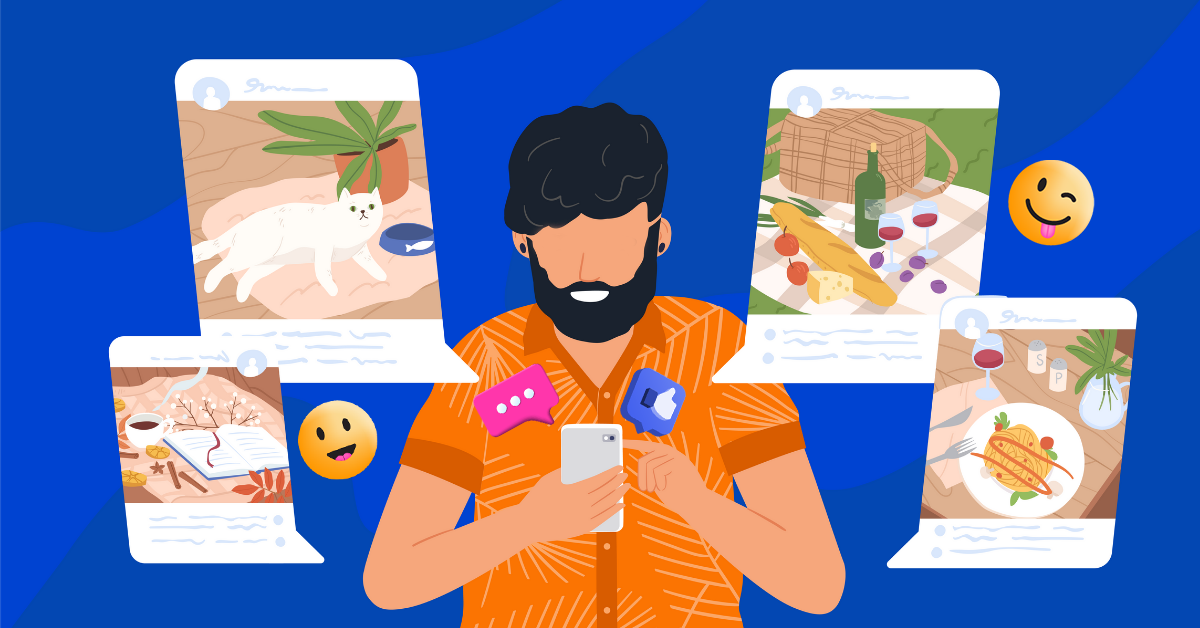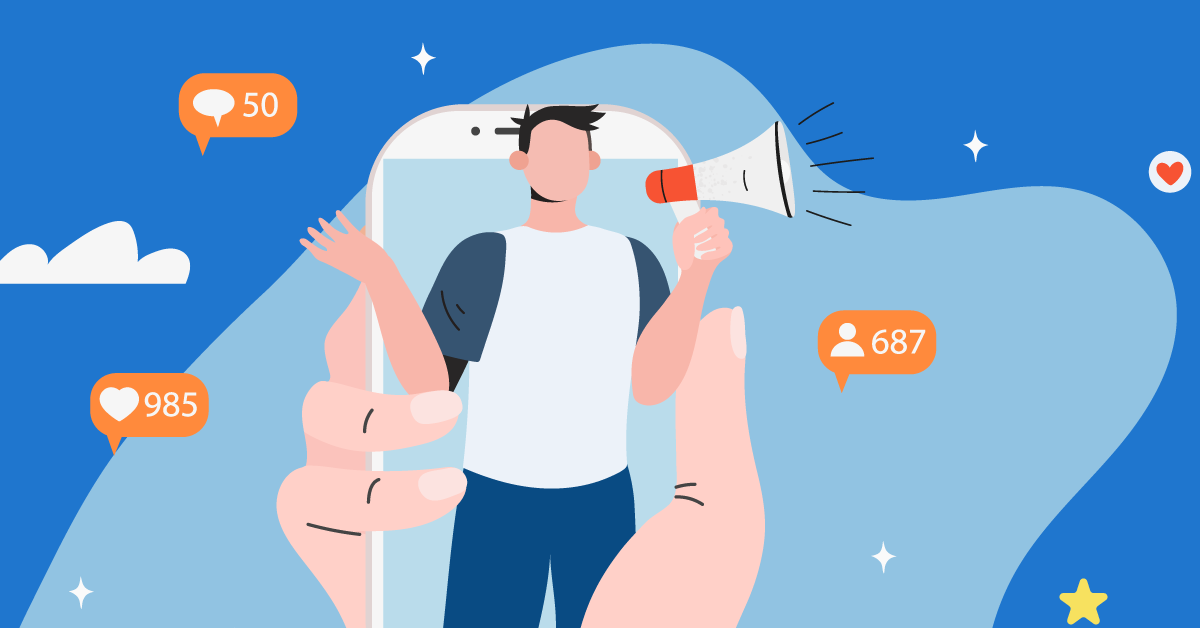Since the birth of social media in the late 1990s, our lives have evolved drastically. People continue to dive into the virtual space where multidimensional connections and social influencers are under the spotlight—front and center.
Remember Friendster? Better yet, remember how fun it was to connect with long-lost friends or even new people online and earn those valuable testimonials?
Today, the platform has left nothing but its digital bones. If we dig up those bones, we’ll see that social media influencer marketing has been around since 2001. A bit deeper, and we might find out where trends are headed this 2022 and beyond.
Back when Friendster launched in 2001, social media influencers were referred to by experts as K-cores. These resilient profiles boast many friends and a certain degree of influence online. As soon as these K-cores fell off the Friendster bandwagon, the platform began disintegrating by 2006.
The platform’s demise in 2009 tells us one important thing. It’s not enough to have millions of users signed up to keep a social media platform alive. What matters most are the solid connections and interactions made within them. Connections wherein social influencers can save both platforms and brands from suffering the same fate as Friendster.
The rise of Influencer Marketing on social media
When everything started to shift towards the digital space in the past two decades, so did companies’ preference toward social influencers. By the end of the ‘90s, ‘weblogs’ or what we now know as ‘blogs’ emerged as a new content-based trend and people started reading.
Naturally, bloggers accumulated more followers to their site, showcasing brands they believed in and used. Marketers saw the potential in reach that bloggers and vloggers could offer, so they started hiring them to promote products across various leads.
By the early 2000s, every social media platform’s launch-to-growth timeline was unprecedented. One good influencer-centric platform example is LinkedIn.
LinkedIn reached over one million users in less than a year after it launched in May 2003. The same rapid user growth case is similar with other platforms such as YouTube, Facebook, Instagram, Twitter, and TikTok.
Marketers soon combined how the blogger/vlogger scenario works with the rapid growth of social media. And just like that, the modern social influencer was born.
Is hiring social media influencers really worth it?
Today, people from all walks of life have the power to engage kindred souls through their social media accounts. Consumers find social media influencers trustworthy, seeing that they know what they are talking about and use the brands they endorse.
So, to answer the question: yes, hiring social media influencers is worth it.
For starters, traditional media advertising channels have slowed down upon the birth of digital. How social media has democratized how social influencers connect with consumers affected the latter’s behavior and preferences. Elite marketers know this well that they are ready to spend over $15 billion on social influencer marketing strategies this year.
Part of the industry’s confidence in such strategies is how social media influencers can take on many hats. They can be reporters, thought leaders, fashion and lifestyle models, or photographers. Anyone can publish anything under the sun and anywhere online as long as they are compliant with social media standards.
However, as most social media influencer marketing strategies go, factors such as platforms, number of followers, image, content, and messaging should also count. Social influencers must offer relatable and helpful content to the right audiences rather than the usual eye-candy ads we see on TV. Otherwise, buyers can easily dismiss your content as spam (and not the kind that’s worth consuming).
One influencer marketing example that efficiently shows the trust built on a consumer-influencer setup is that of Huawei Philippines.
The brand tapped three tech-savvy social influencers (each with a significant social media following) to help launch a new product. With just two product and lifestyle posts each, the brand achieved a 5.9-point lift in ad recall, 3.4-point lift in brand awareness, and 2.5-point lift in action intent in just over a month.
The simple truth is that today’s consumers have difficulties trusting traditional ads. What they trust are people who share their lifestyles and give them good ideas that help solve their pain points.
Which social media influencers would perform best?
Many tend to ask the difference between influencer marketing and the good old celebrity endorsements we see on television. To be clear, both strategies can promote brands and products. The main difference lies in how scalable influencer marketing can be instead of the other.
According to the number of followers they have on their accounts, there are three types of social influencers. You have your micro-influencers (3,000 to 10,000 followers), macro-influencers (10,000 to 1 million followers), and mega-influencers (1 million and above followers). While each type has its strengths and X-factor, it might be best to tackle which ones can perform best for your brand.
Most big-name brands hire celebrities to influence their target markets and gain a bigger following. Then there are social influencers who have become celebrities in their own right, thanks to their chosen platforms.
However, what’s surprising is the micro-influencers who are considered the most effective (and cost-efficient) online personalities today. Micro-influencer marketing accounts for 91 percent of the global market share in the previous two years. This year, they show no signs of slowing down.
The prevalence of ad-blocking software left well-produced ads that feature popular superstars at the foot of the consumer’s door. Soon, lesser-known social media influencers turned into game-changers who defied these ad-blocking apps and the way brands advertise their products altogether.
Micro-influencers who have already established their own following without the support of brands became the ‘it’ celebrities of the digital space over actual stars. That’s because consumers discovered they preferred more stories they could learn something new from and more relatable experiences. Most of all, they can finally look up to people they can consider as trustworthy peers and listen to for advice before taking any action.
In turn, brands win in terms of costs. Many micro-influencers are happy with freebies they can review on their social media channels rather than being financially compensated.
Perfect micro-influencer marketing examples are tech and gadget reviewers with at least 10,000 followers on YouTube. Micro-influencers review a tech brand’s latest gadget before its market release, highlight its unique selling points, then gain a significant number of views to monetize. Certainly a win-win deal for both brand and influencer!
How Influencer Marketing evolved during the pandemic
Businesses should note how perceptive most consumers have become in today’s influencer marketing landscape. They can now spot the differences between ads and genuine posts. And this has been undeniably proven during the height of the pandemic.
Everyone tightened their budgets, and customers’ needs became more specific and demanding to say the least. The fact is that most of those shifts happened online.
Last year, 12 million new digital consumers were in the country, as reported during the Philippine Startup Week 2021. 99 percent of these consumers remained hooked on purchasing goods online.
As the pandemic progressed, food, safety, and health rose as the top essential needs. Naturally, social influencer marketing strategies changed from telling consumers how to enjoy their food in restaurants to cutting costs and being safe by eating indoors.
Social influencers began thinking of ways to enjoy life while stay-at-home orders were in place and brands capitalized on those ideas. It was also a good direction for brands, as most had cut their marketing budgets due to the pandemic’s disruption.
Another excellent social influencer marketing idea is how influencer management agency Spark It encouraged businesses to ‘put people first’ during the health crisis. The practice has made key opinion leaders of micro-influencers who came out of the woodwork and pushed brands into the spotlight.
Of course, we have already seen this type of marketing phenomenon in the country. It was present even at the onset of social media a little over a decade ago. Bloggers and vloggers start building communities of followers who read their articles, click on their videos, and engage in the comments section.
Yet despite its current prominence, social media influencer marketing strategies are still relatively new in the local business landscape. Things don’t end once you’ve tapped a social influencer and let them post on social media on your behalf. Though the boost influencer marketing got from the pandemic was somewhat a knee-jerk reaction, the good news is that there’s more to it we can explore in 2022.
What to expect next from Influencer Marketing
As more consumers are getting smarter over how influencer marketing strategies work, businesses should refrain from feeding them tone-deaf content that oversells. Part of the strategy also includes promoting your social influencers are trustworthy and reliable individuals who know their niches and generation inside-out.
This 2022, social influencer marketing strategies should veer away from posting regular marketing content that tends to flood a user’s social media feed. Instead, helping their social influencers become more socially conscious and responsible amidst the pandemic can further draw more followers to their accounts.
Producing posts, videos, and stories that help people out while they weather the pandemic storm is the surefire approach this year. Brands can help themselves by being creative in inserting product intrusions in such formats. Maintaining the crude, genuine nature of their marketing assets is also a must, if not allowing social influencers to produce their own content altogether.
A creative social influencer strategy example in the United States is that of travel expert Lindsay Silberman. Since the pandemic has dramatically affected the travel industry, the influencer featured various activities to do at home to keep her followers engaged. Now she has expanded her influencer power to Amazon finds and beauty tips which do well in raking in more profit.
Prepare for a future that belongs to social media—and Influencer Marketing
Giving consumers new and creative ideas to handle the challenges of the pandemic makes influencers more relatable to their followers. It tells their audience that they are not alone in all this uncertainty and that there are plenty of solutions for their pain points.
Changing lanes from glamorizing a brand to making it a socially responsible entity is the key to an effective 2022 influencer marketing strategy. After all that’s said and done, it all boils down to one of the most fundamental marketing tenets—give people what they need, and they will follow.








